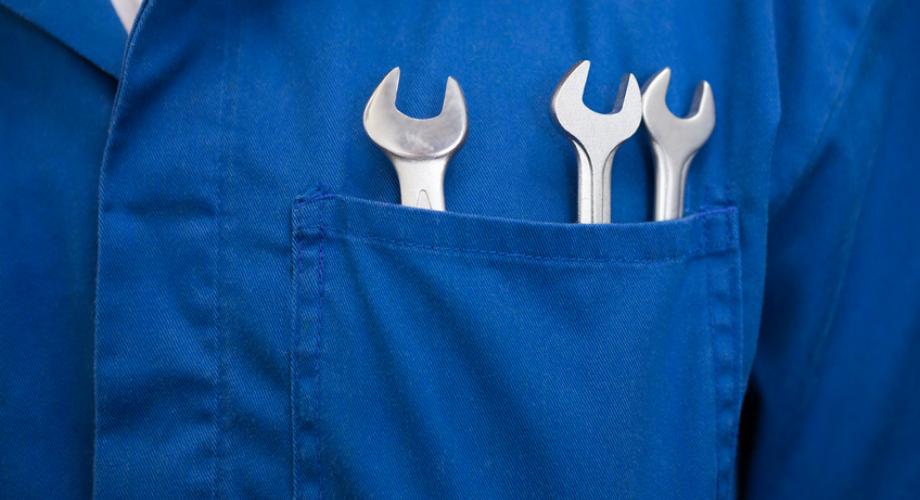Having maintenance technicians participate in move-in tours makes residents’ lives easier.
An emergency situation is hardly the ideal time for when a resident wants to learn how to use the fire extinguisher or the water shut-off valve. To alleviate that potential for stress, many apartment communities invite a maintenance technician to come along on the initial move-in tour. There, they demonstrate such functions so that residents can better handle these dramatic events.
Using these tours as teaching moments between staff and residents is leading to increased renewal rates and fewer work-order requests and emergency repair jobs. The practice also improves resident relations and builds camaraderie between the maintenance team and their co-workers.
Capital Investment Group (CIG), which operates approximately 1,200 apartment homes over its seven-community Midwest portfolio, requires a tech to be on the tour, says Stacy Walton, CAM, Vice President, Operations.
“It’s our policy that the first person we want our new residents to meet is someone on the maintenance team,” Walton says. “These are the staff members who will be entering the apartments and having frequent contact with our residents during the day, so we want to establish a comfort level.”
Moving to a new community typically can leave residents feeling uncomfortable at first with their new surroundings, NAA Education Institute (NAAEI) National Maintenance and Safety Instructor Paul Rhodes, CAMT, says. “Having a friendly face at move-in that specializes in handyman-type skills and information can be reassuring.”
Walton says CIG’s 66 percent renewal rate is attributable in part to this policy. Tours last from 10 to 30 minutes and cover many basic plumbing and operational functions on the move-in inspection sheet. Residents also learn how to reset the ground fault circuit interrupter and garbage disposal, understand codes for light switches, use the water shut-off valve and operate the thermostat and window blinds.
This tour also is a good time for the maintenance team to correct any issues the resident notices so that their home fully meets their satisfaction, Walton says.
Walton adds that the program inspires better apartment turns because technicians who give a perfect walk-through earn $5. This money goes into a pool that is split among the entire maintenance team at the end of each month.
“We see that because of the tours, we are reducing the number of emergency calls we receive from residents about things that they consider to be emergencies, such as plumbing problems,” she says.
Holly Michael, CAM, Marketing and Training Director, CLK Multifamily Management, which has 15,363 apartment homes in more than 73 communities, ranging from Pennsylvania to Florida to Texas to Chicago, says her company supports the same practice.
“While we encourage communities to have maintenance techs join the move-in tour, CLK grants autonomy in the way its communities are managed, enabling its district managers to make the call on whether maintenance teams should participate in move-in tours,” Michael says. “In some cases, there is not sufficient time or available staff to require the policy.”
Those who bring along maintenance technicians perform better.
“What we find is that in examples of the tour being given, our operations team saves time in the long run,” Michael says. “There are fewer work requests and service calls, so the entire team benefits. And in these instances, this helps build camaraderie between the onsite team and the maintenance team—something all communities hope to achieve.”
Rhodes says effective move-in tours such as these speak to the increasing need for maintenance team members to increase their communication and soft skills in addition to their technical repair abilities. These are points made through NAA Eduction Institute’s Certificate for Maintenance Technician (CAMT) designation program curriculum.
Don Marchbanks, Vice President of Construction, CLK, says his company understands that its maintenance professionals are a vital part of the overall company success.
“We are proud to invest the time and dollars to train and involve our maintenance professionals in every aspect of the operations of their properties,” Marchbanks says. “We see they welcome the opportunity to be a part of the budget process, capital projects, overall day-to-day operations, move-in inspections and owner visits. CLK’s continued success is truly a combined team effort with everyone from owners and support staff to the site level teams sharing accountability and ownership in every asset.”
Adds Rhodes, “As a side benefit, the new resident sees maintenance as a person, not an inhuman department that will only be notified in the event of a crisis. In effect, because residents met a tech during move-in, they are no longer just calling for a repair after hours, they are calling a person and asking them to come fix a problem. This also can indirectly decrease non-emergency, after-hours calls because residents may think they are interrupting a person (not a process).”
CLK Manager Tiffany Bonilla Benitez adds, “Having maintenance to assist with move-ins helps reduce work orders and also shows the new resident how much we care.”
CLK Maintenance Supervisor Israel Vargas-Valdez says, “Pointing things out to the residents and demonstrating proper use or function of the unit leads to a great first impression and helps with resident retention.”
Paul R. Bergeron III, Director of Publications for NAA
